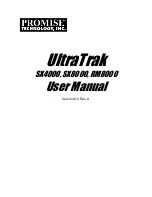
4.
Determine the tier range values
The page is allocated to the appropriate tier according to performance monitoring information.
The tier is determined as follows.
1.
Determine the tier boundary
The tier range value of a tier is calculated using the frequency distribution graph. This
acts as a boundary value that separates tiers
The pages of higher I/O load are allocated to the upper tier in sequence. Tier range is
defined as the lowest I/Os per hour (IOPH) value at which the total number of stored
pages matches the capacity of the target tier (less some buffer percentage) or the IOPH
value that will reach the maximum I/O load that the tier should process. The maximum
I/O load that should be targeted to a tier is the limit performance value, and the rate of
I/O to the limit performance value of a tier is called the performance utilization percent.
If the performance utilization percent shows 100%, this indicates that the target I/O load
to a tier is beyond the forecasted limit performance value.
CAUTION:
The limit performance value is proportional to the capacity of the pool
volumes used in the tier. The total capacity of the parity group should be used for a pool
to further improve the limit performance.
2.
Determine the tier delta values
The tier range values are set as the lower limit boundary of each tier. The delta values
are set above and below the tier boundaries (+10 to 20%) to prevent pages from being
migrated unnecessarily. If all pages subject to tier relocation can be contained in the
upper tier, both the tier range value (lower limit) and the delta value will be zero.
3.
Determine the target tier of a page for relocation.
The IOPH recorded for the page is compared against the tier range value to determine
the tier to which the page moves.
5.
Migrate the pages
The pages move to the appropriate tier. After migration, the page usage rates are averaged
out in all tiers. I/Os which occur in the page migration are not monitored.
Tier relocation rules, restrictions, and guidelines
Rules
•
Performance monitoring, using both Auto and Manual execution modes, observes the pages
that were allocated to THP V-VOLs prior to the start of the monitoring cycle and the new pages
Smart Tiers
83
















































